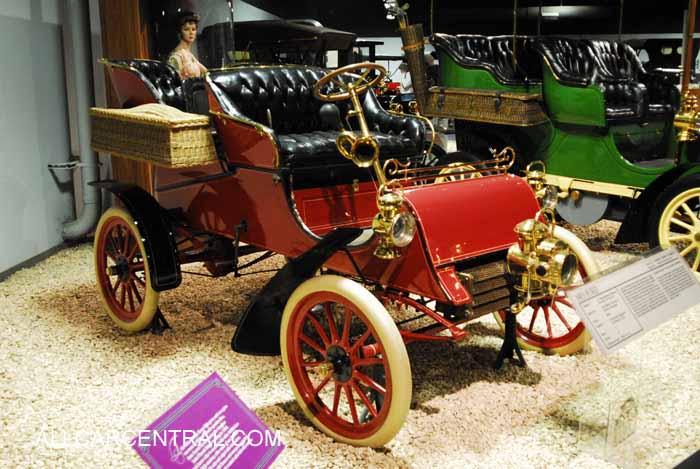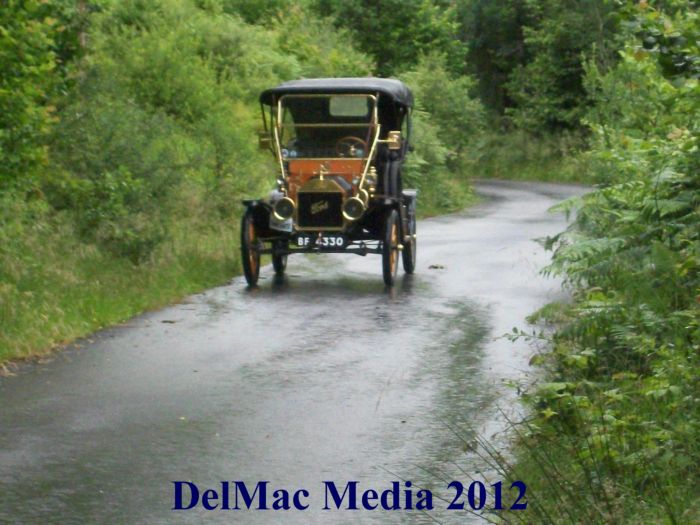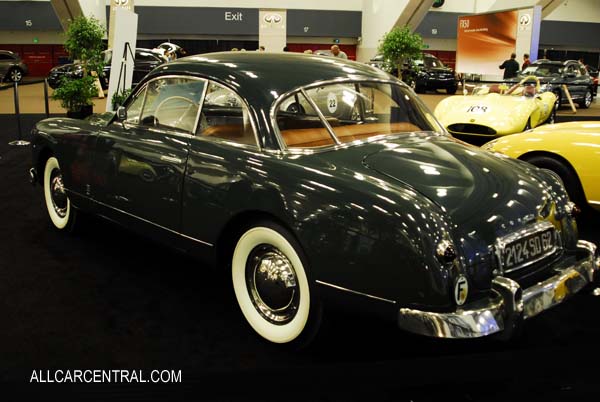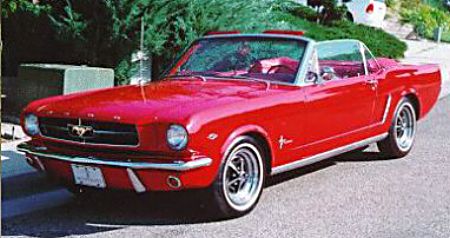FORD MOTOR COMPANY
If asked to name the best known car manufacturer in the world I would suggest Ford first then VW followed by Rolls Royce. Yes I know there are many other manufactures in Europe and of course Japan not forgetting the USA but...We remember these by product rather than image. Example: The ever popular "Mini", the original or modified BMW product. Where ever you may go in the world including Africa, Asia or South America, you will see FORD, on private vehicles, commercial trucks and even tractors. This is quite unique especially when we look back at the development of Ford and its marketing policy over the years. The first thing that we notice is that the company based its appeal on single products that it ran for years without any real change.
1903 Ford A Rear Entrance

The Model T ran from 1908 through to 1927...Nineteen years. When the company decided to offer more than one car there was a general feeling that Ford should be careful before making any serious changes. The Model T was a unique car for its time, over sixteen million were produced. Its successor, the Model A, continued the famous transverse suspension and was the first production vehicle in the world to feature a safety glass windscreen. The recorded sales in the first sixteen months of production reached a million. (.A world record at the time). As previously stated when the Ford Company decided to offer a more diverse range of products concern was expressed by certain Board Members but in reality the final decision was made by one individual, Mr. Henry Ford, whose word was seldom challenged. We see an example of this in the way that his only son was regarded and treated by his father but that's another story for another time.
Model T Ford
At Inveraray Castle Scotland
Image by DelMac Media

Ford unlike other US manufactures of his day was not afraid to take his manufacturing capacity overseas. As early as 1911 Ford opened an assembly factory in Manchester, England. Later, in 1925 he opened a production factory in the UK, his first but certainly not the last in his overseas development. As with the early Manchester plant this factory simply assembled Ford cars from parts shipped from the US but, to the delight of many when the world was experiencing a depression, Ford built yet another completely new production factory a few miles from London at a location called Dagenham. At that time a small town that would become famous for producing vehicles for both the UK and of course Europe. From 1932 onwards the company's main stay in the US market was the famous Flathead V 8 that was installed in a full range of Ford vehicles. It was obvious that such vehicles would have a limited appeal in overseas markets where the average car was both small in size and equally small in power. As Ford now had a full size production factory in Britain all he needed was a car that would sell in the European market.
1934 Ford Model Y
Image by Rick Feibusch
_Model_Y_1934__Rick_Feibusch-2008.jpg)
The answer; the Ford Model Y designed in the US but produced in the UK from scratch. Engine size under a liter with four cylinders and a single Zenith carburetor. Top speed around sixty MPH. The car could hold four adults in reasonable comfort assuming you were not six feet tall and weighed over two hundred pounds! Price was very competitive at $600.00 (Based on the exchange rate at that time of four dollars to the British pound).
This put the car in direct competition with both the Morris Eight and the small Austin. It was certainly a success and the basic design continued after WWll when the car was revamped with a new two door body sitting on the same frame, breaks etc, with an increased engine size to one point two liters which made little difference to performance but looked better on the sales sheet! Now named the Ford Popular, which of course it was, the last one left the UK factory in 1949 but were still around for the next fifteen years mainly used as a second family car. A few were sold in Germany and France as the European production capacity was very limited due to war damage, it took another five years, (1950), before the world started to see new European cars for sale. Like Fords early venture into Britain around the turn of the century, Ford acquired a production plant in Germany in 1925, and then built a new factory in Cologne a few years later that built cars to American designs but smaller of course. The most popular, built between 1935 and 1939 was the "Taunus"...If the name sounds familiar a more modern version was produced in 1952 and the model with various upgrades was still in production into the 1970s.
1953 Ford (France) Comete Facel

Encouraged by the European adventure Ford expanded and built a production plant in France in the early post war years, once again offering American size and style cars the first being a two liter V 8 "Vedette". Considering that France was trying to recover from the devastation of the war and the economy was at best, in poor shape, this vehicle found few buyers. The timing was certainly wrong, a few years later might have produced a different picture but not in the late 1940's. The next offering was not much better and Ford France was sold to "Simca", in 1954.
A production plant in Australia did much better and is still a major manufacturer despite the competition from such locations as Japan and Korea. I drove an Australian Ford "Falcon" back in 1974 and I thought it was an excellent car for the incredible distances that you drive "Down Under". The influence of American design never took hold and the company was able to create their own style etc., taking into account the needs and tastes of their customers.
1965 Ford Mustang
Image by Rick Feibusch

I would certainly be remiss if I closed without mentioning the Ford "Mustang". To my mind the best buy in terms of price and performance in the modern sports car world. I have own two and loved them both. Not quite an Aston Martin but certainly a lot less expensive. Henry Ford certainly left a legacy that it would be had to equal. From his production techniques, through to an impressive sales achievement in the early days of the horseless carriage. Every motor manufacturer since then has benefited by the vision and ability of Henry Ford.
Geoff Wheatley

BACK TO TOP